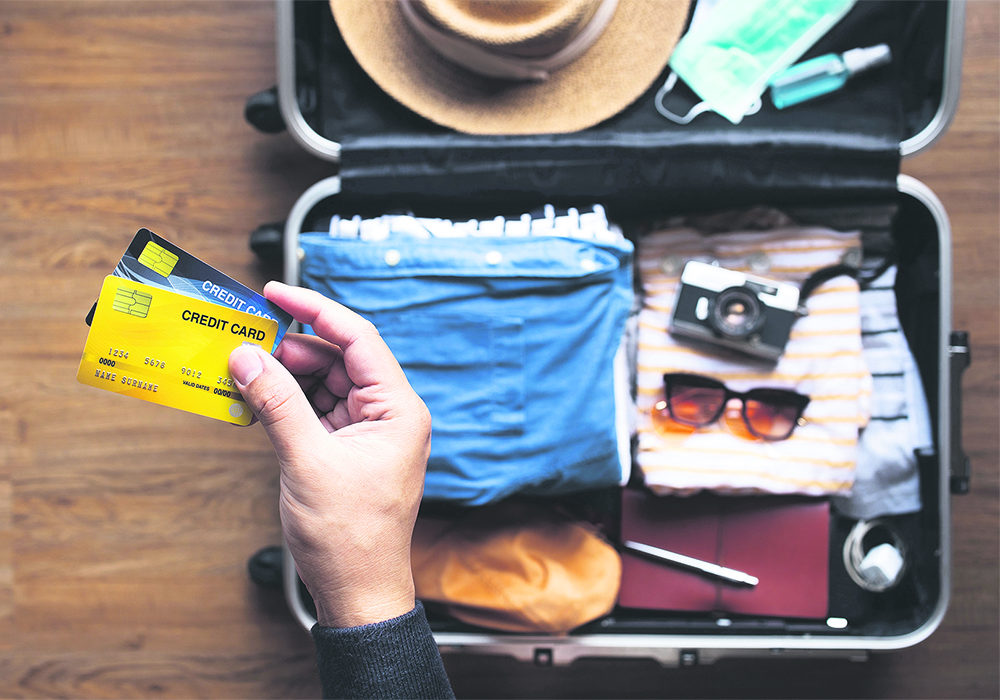What’s the best way to manage money when travelling outside Canada?
In the United States and much of Europe, we can use credit cards most of the time, as we would in Canada. But even there, we should consider which cards provide the best value and security.
In many parts of the world, credit cards are widely accepted but cash is still king in smaller shops and restaurants or farther off the beaten path.
We prefer credit cards over debit for most spending. If something goes wrong, such as an unauthorized charge or you didn’t get what you paid for, you can dispute the charge with the credit card company. With a debit card, they already have your money.
Read Also

Accurate accounting, inventory records are important
Maintaining detailed accounting and inventory records is not just a best practice; it’s a critical component of financial health, operational efficiency and compliance with programs like AgriStability.
Using a credit card linked to a rewards program could rack up quite a few points throughout a trip, and some cards come with insurance coverage for things like trip interruption.
A debit card is essential for ATM withdrawals, so we carry both. We always travel with a minimum of three credit and debit cards, in each of our names, including both Visa and Mastercard, and from different banks.
Electronic banking doesn’t always work as promised. Occasionally a card simply won’t work in another country, even though all the symbols on the ATM indicate that it should. Having back-ups spreads the risk.
For foreign currency purchases, the best is a credit card that doesn’t charge foreign exchange fees. Most credit cards tack on another fee, usually around 2.5 percent, when you purchase in another currency.
Fortunately, a small number of cards don’t. One is the Scotiabank Passport Scene Visa Infinite. It has an annual fee but also comes with perks such as accelerated points accumulation and free airport lounge visits. As with any premium credit card, weigh the benefits against the costs to determine if it is worthwhile.
A more straightforward option is Home Trust’s no-fee Visa that doesn’t impose foreign exchange fees. There are a few other choices, though not many.
A prepaid Visa or Mastercard that you load with money provides another option. Until recently, we didn’t see much use for these, since many come with fees and restrictions, plus you forego the benefits that come with regular credit cards.
However, we do see limited use for some relatively new cards that have no fees, especially for foreign exchange transactions, which is a significant money saver. These are useful at places that don’t accept credit cards (or that impose a surcharge) but do accept debit.
One fairly new offering is a prepaid Mastercard from EQ Bank, which has no fees, including for foreign exchange transactions. The card is associated with your EQ Bank savings account, so funds you load onto the card continue to earn interest until spent.
They have no fees for ATM withdrawals. If an ATM in Canada imposes a withdrawal fee, they promise to reimburse it. However, they do not refund locally imposed ATM fees outside Canada.
Another advantage is security. A regular debit card is linked to your bank account, so if the ATM you use gets hacked, your entire bank account could be vulnerable. With a prepaid card, there is no connection to your banking information so only the amount loaded onto the card is at risk. Depending on the card issuer, there may be fraud protection against this as well.
Dealing with ATMs in other countries can be a minefield. Avoid all third-party machines — those not associated with banks. They are a bad deal everywhere, and in Europe there are many horror stories of exorbitant fees and poor exchange rates. Make sure the ATM is associated with a major bank and displays symbols (Plus, Cirrus, for example) that correspond to your debit card.
Even with major banks, withdrawal fees could range from free to modest to excessive. They could vary from country to country and among banks in the same country. Fortunately, that tends to be a hot online topic so you can usually find recent articles or conversations on travel forums such as Trip Advisor as to which are best and which to avoid.
For example, we searched for ATM fees at banks in Mexico in December. They varied from 22 to 174 pesos (roughly C$1.70 to $13.50), so it could come as quite a shock if you didn’t have advance information and picked a bank ATM at random.
Things change, so if you see an unusually high fee come up in the course of an ATM withdrawal, you can cancel it and try a different bank.
There are always a few oddball situations. When we travelled to Argentina last winter, we had to work around that country’s bizarre exchange rate system. Using credit cards was best, although many places didn’t accept credit cards or added a usage surcharge.
Getting cash from ATMs didn’t make sense because the exchange rate they used was dramatically lower than that used by credit card companies. We got the best rate by exchanging U.S. dollars in cash at money changers, something we knew in advance. But that incurred the risk of carrying more cash than we normally would.
In all cases, it’s best to research the currency situation before you go.
Arlene and Robin Karpan are well-travelled writers based in Saskatoon. Contact: travel@producer.com.
















